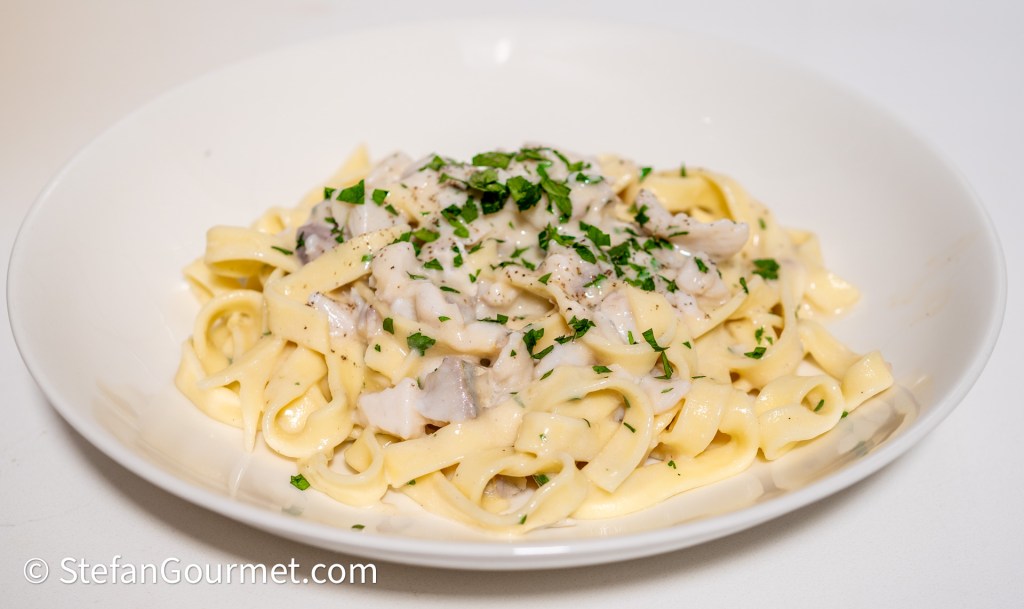
This pasta dish was inspired by a fish stew from Burgundy called Pôchouse. The fish is poached in white wine and the poaching liquid is reduced together with fish stock and then turned into a creamy sauce by adding crème fraîche and thickened with beurre manié. I thought this would be great over fresh pasta, and it turns out I was right. For this recipe I slightly simplified the method and omitted the eel (which you could certainly also add). Because of the use of crème fraîche and beurre manié this is a bit of fusion between French and Italian cuisine — Italians would be more likely to use regular whipping cream and make the sauce like a besciamella (white sauce). But the most important thing is that this is truly delicious and that I will definitely make it again. In fact, I made it recently without taking photos, and made it again soon to blog it. Pikeperch is also known as zander and is a freshwater fish. You could also make this with a white saltwater fish that doesn’t flake too much like sole, European seabass (branzino) or halibut.
Ingredients
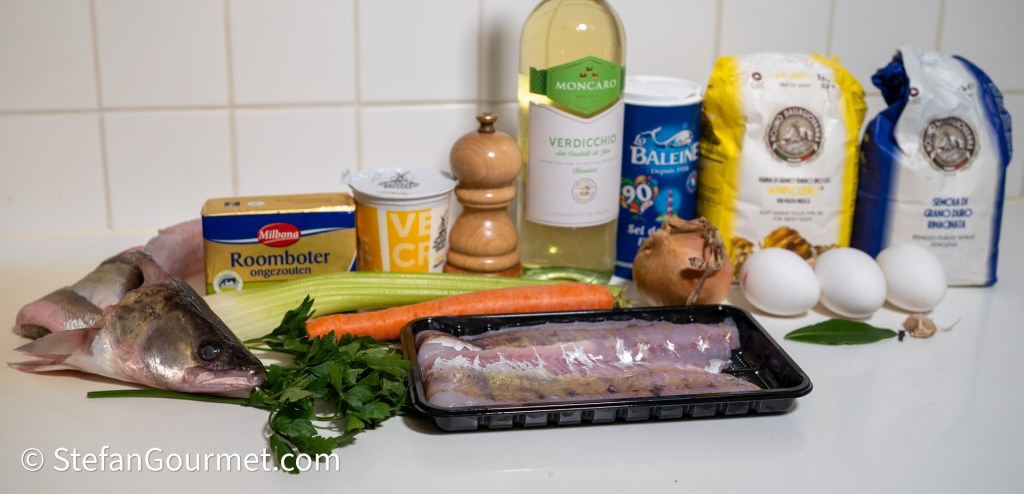
For 3-4 servings
- 1 whole pikeperch of about 800 grams (1.8 lbs), fillet separate from the head, skin, and bones
- 1 carrot, 1 stick celery, 1 onion, all chopped
- 1 bay leaf, 1 clove garlic, 1 clove
- 2 Tbsp minced fresh flat leaf parsley, and the stalks of the parsley
- 60 grams (1/4 cup) crème fraîche
- 375 ml (1/2 bottle) dry white wine
- salt and freshly ground black pepper
- 15 grams (1 Tbsp) butter, at room temperature
- 15 grams (1 1/2 Tbsp) flour
- fresh tagliatelle made from 3 eggs and 150 grams (1 cup) Italian 00 flour and 150 grams (1 cup) semola di grano duro rimacinato
Instructions
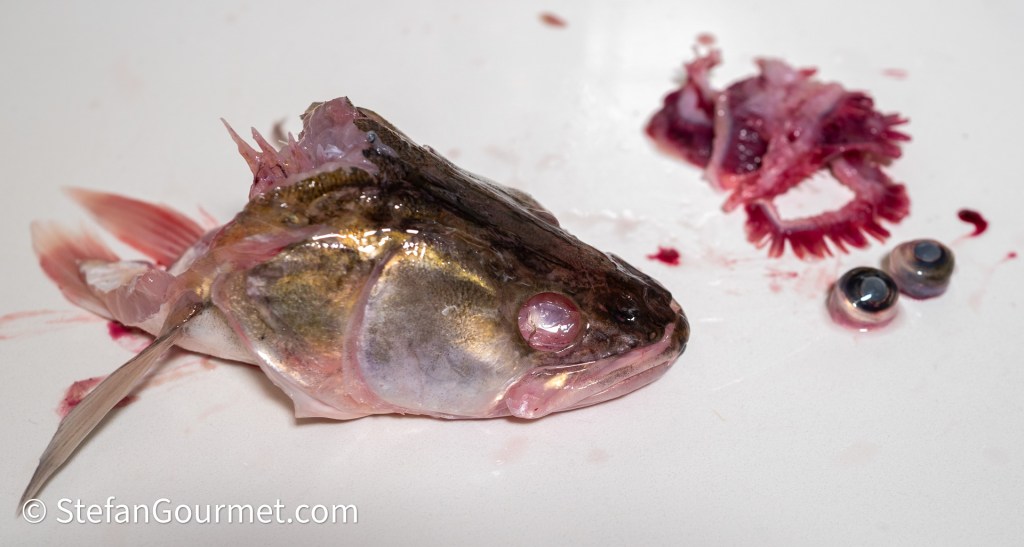
Start by making the fish stock from the head, bones, and skin of the fish. Remove the eyes and gills from the head, as they would make the stock bitter. Make sure all of the innards of the fish have been removed.
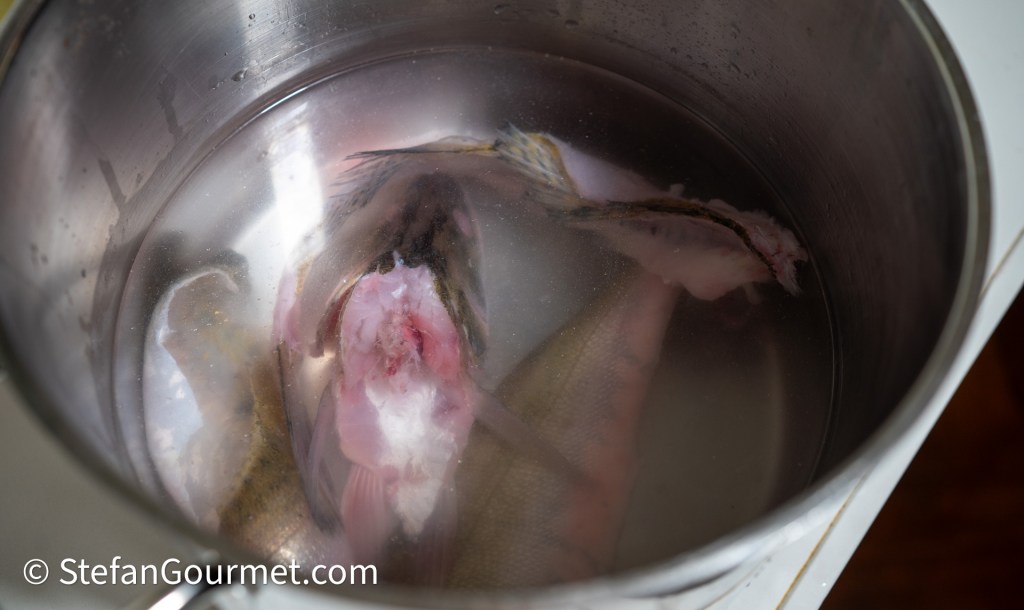
Soak the fish head, bones, and skin in cold water for a few minutes to remove most of the blood.
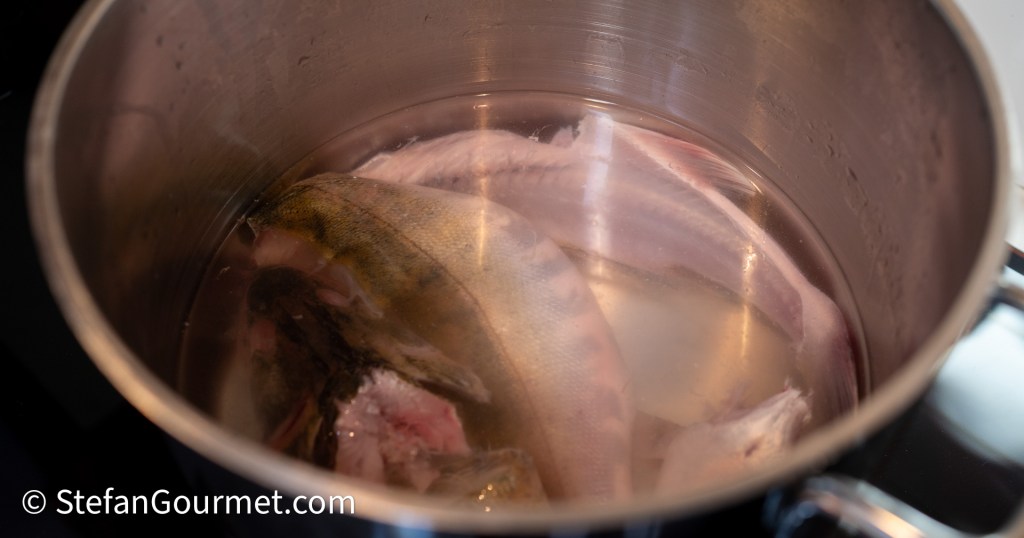
Drain the soaking water, place the head, skin, and bones, in a stockpot, and barely cover with cold water. Do not use more water than necessary, because you will have to reduce it later.

Bring to a boil and remove the scum that will rise to the surface.
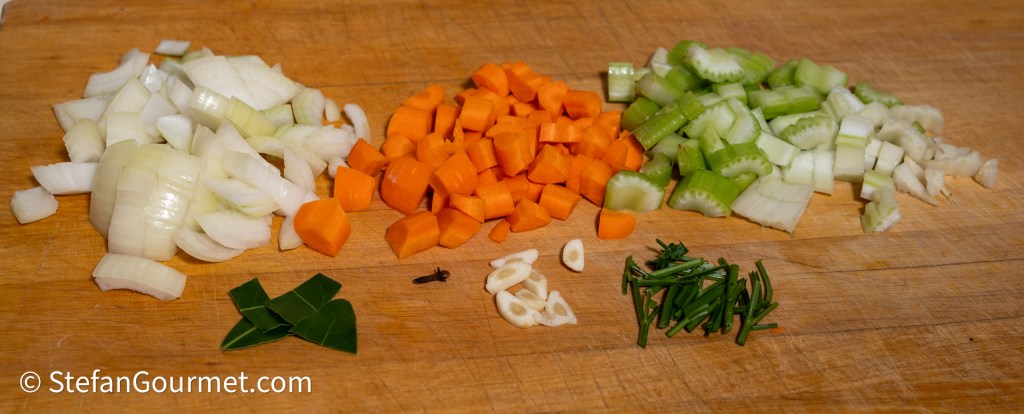
While you are waiting for the water to come to a boil, prepare the aromatics for the stock: chop the onion, carrot, celery, garlic, parsley stalks, and bay leaf. After skimming the stock, add all of them together with the clove.

Simmer the stock, uncovered, for 30 minutes.

Sieve the stock. First with a colander to get rid of the large pieces…
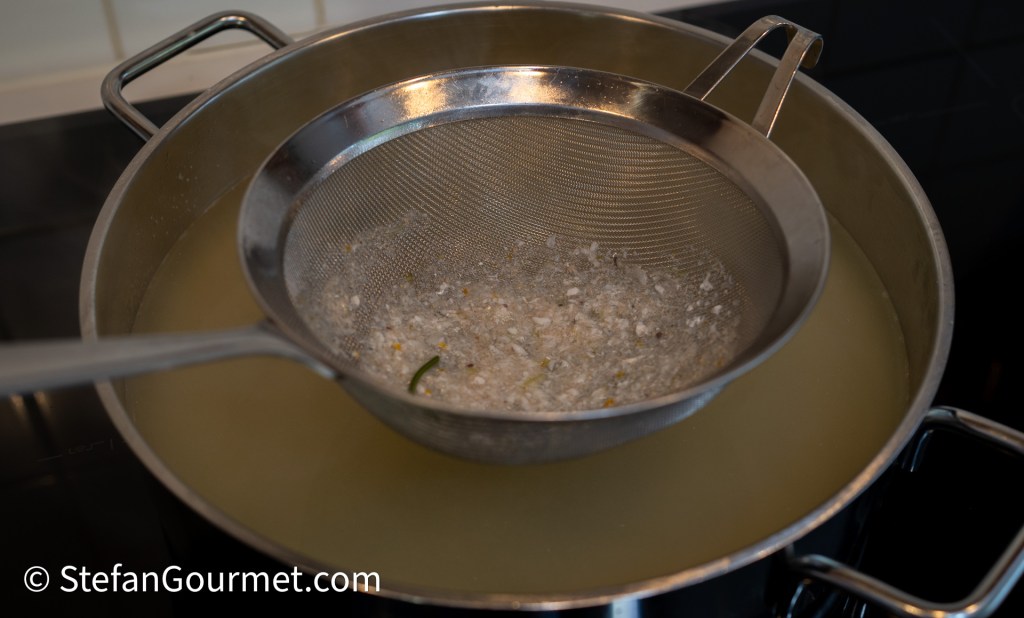
…and then again with a fine sieve.
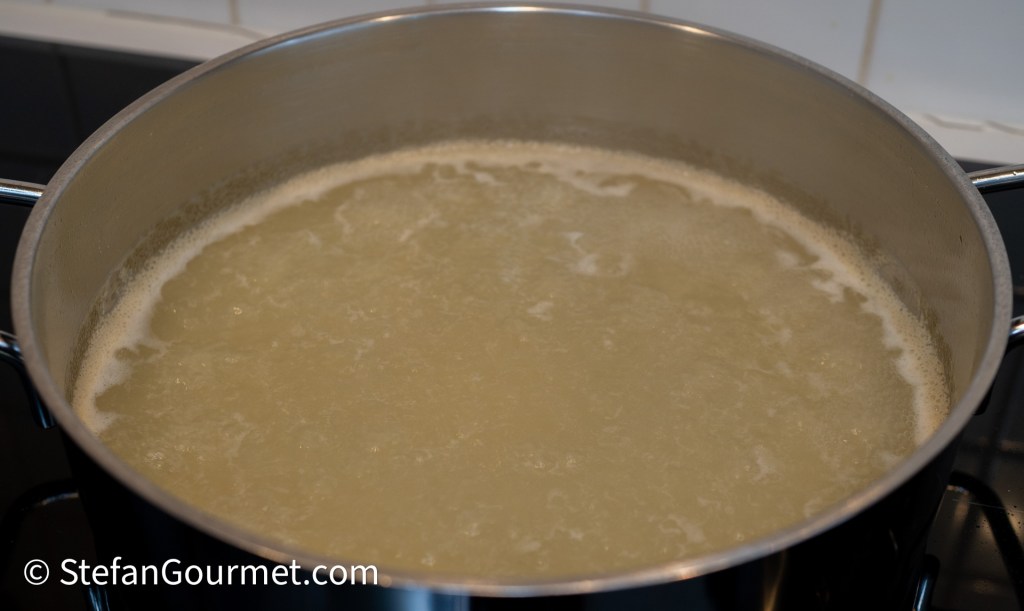
Pour the stock into a wide shallow pan, bring to a boil, and simmer gently to reduce to about 250 ml (1 cup).

In the meantime, season the fish fillets with salt on both sides.
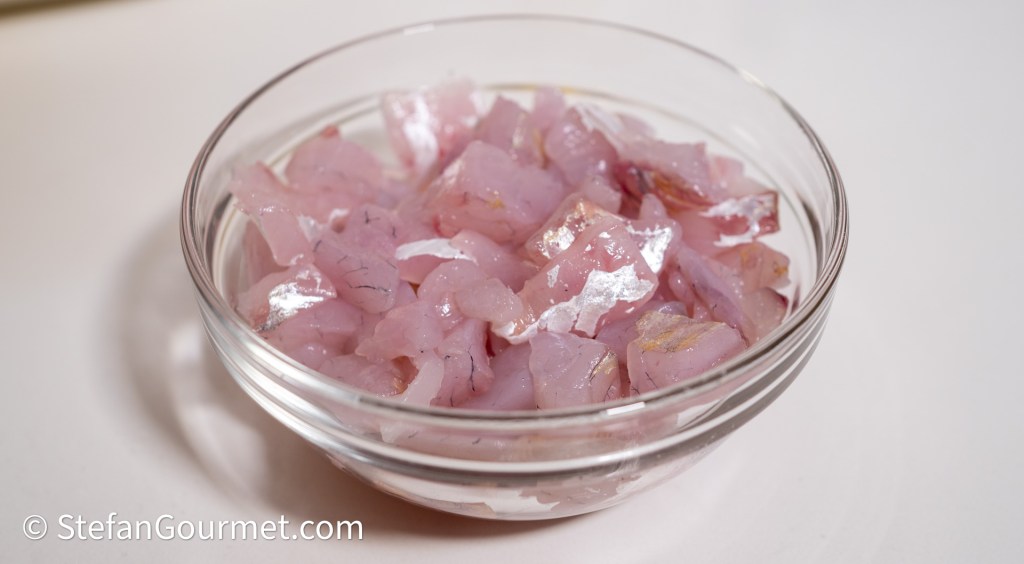
Then dice the fish, and place it in the refrigerator to allow the salt to penetrate into the fish.
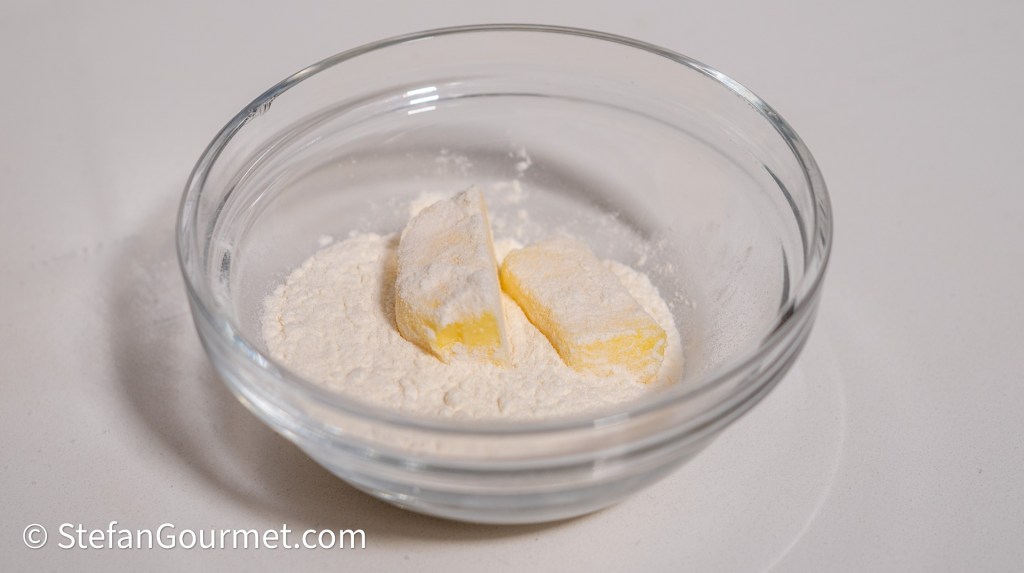
To make the beurre manié, combine 15 grams of butter at room temperature with 15 grams of flour…
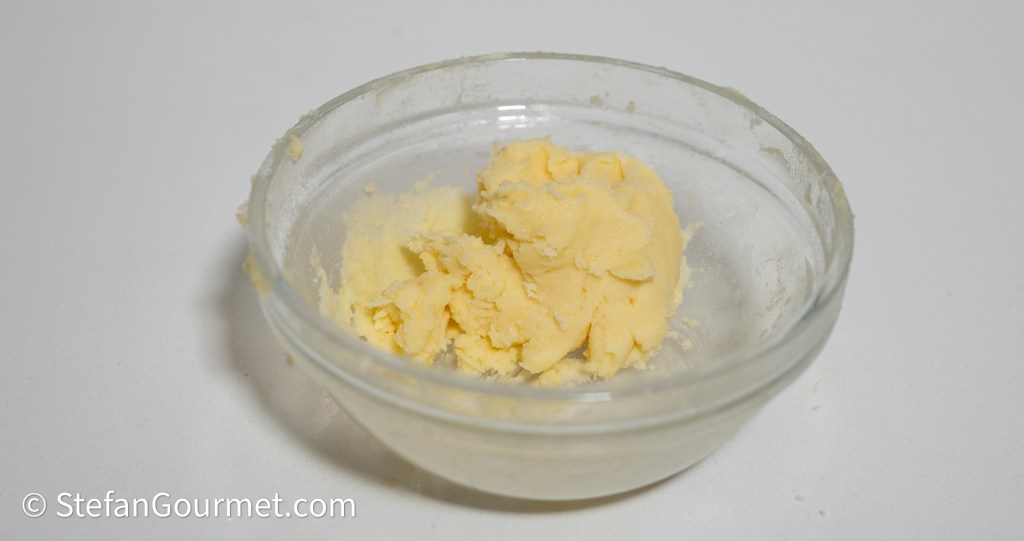
…and knead it until homogeneous.
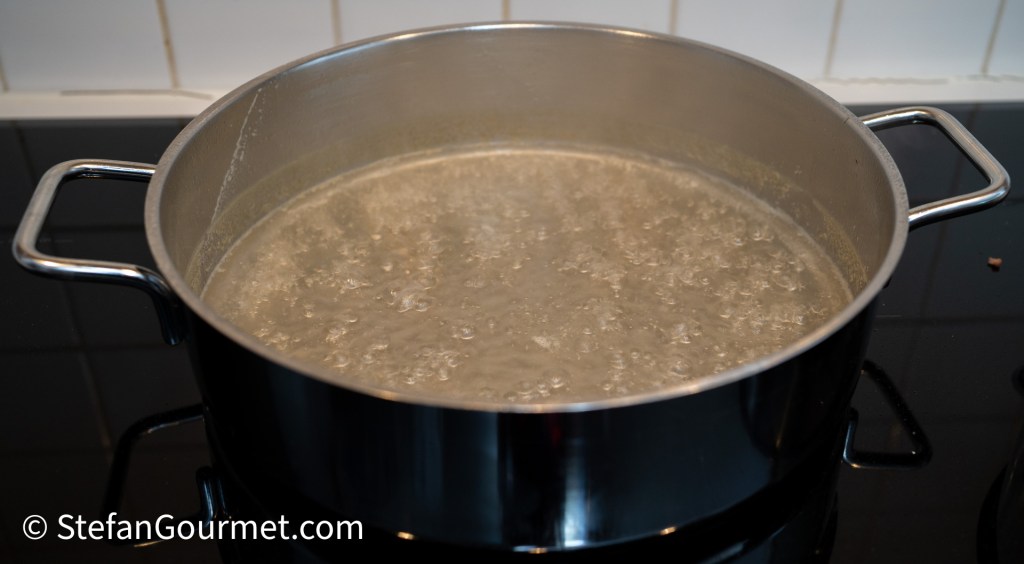
Bring 375 ml of white wine to a boil, and reduce it by half.
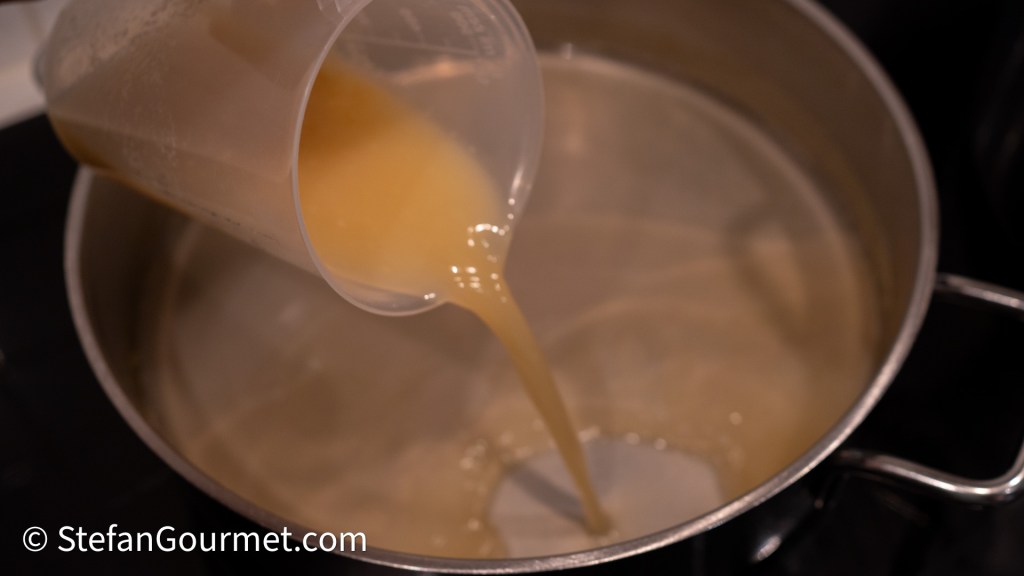
Add the reduced fish stock to the reduced wine.
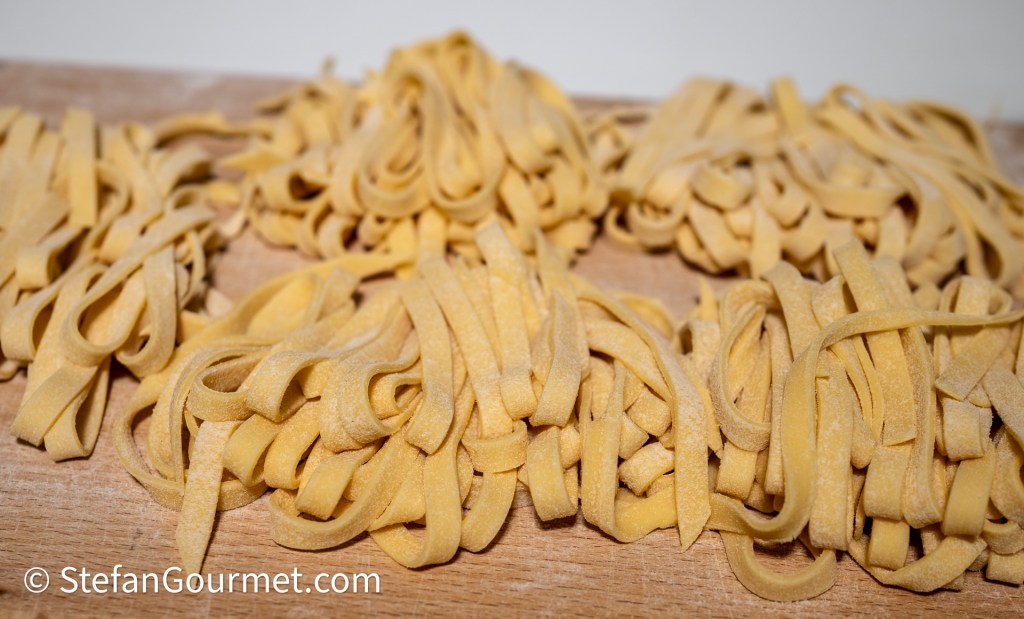
Make fresh tagliatelle using my instructions. They should be about 7 mm wide (about 1/3 inch) and not too thin.
Up to here the recipe can be prepared in advance. Make sure to sprinkle the pasta well with flour or to leave the sheets to dry a bit before cutting them, as otherwise the tagliatelle may clump together.
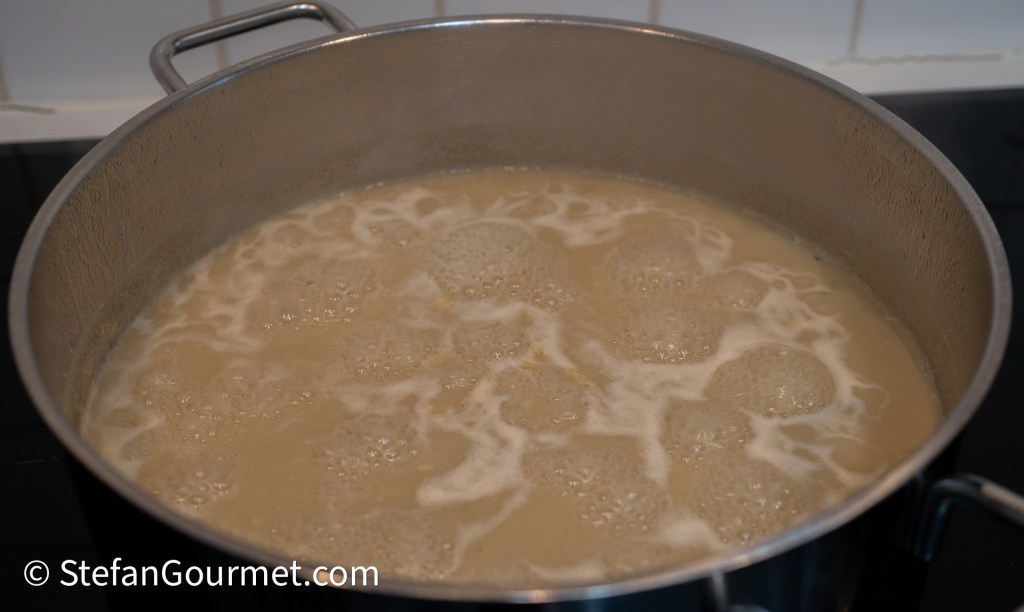
While you are waiting for the water to boil, bring the fish stock and white wine mixture to a boil.
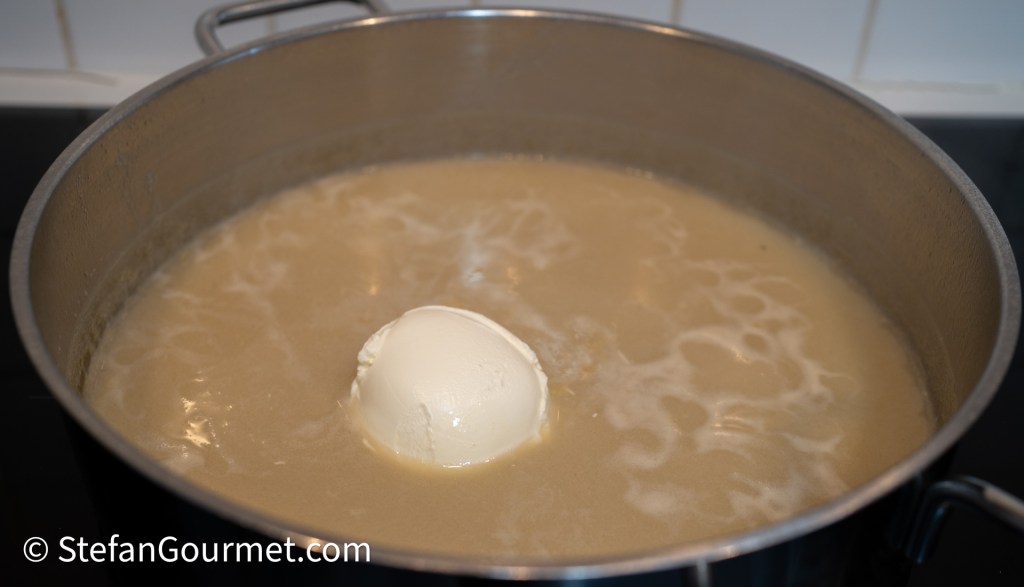
Add 60 grams of crème fraîche, and stir over low heat until it has been dissolved.
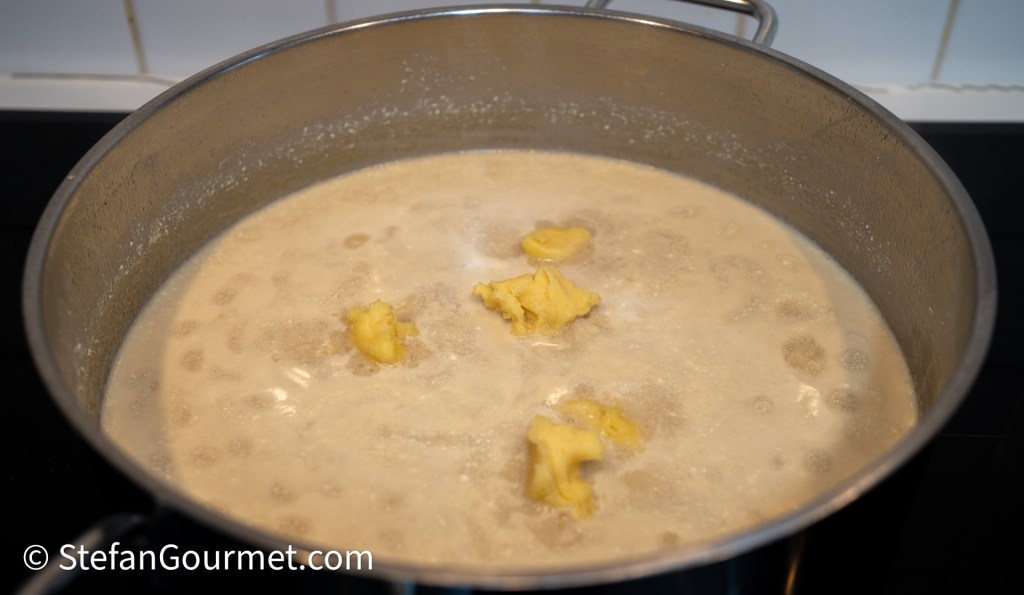
Add the beurre manié in pieces.

Stir over low heat (a slow simmer) until the beurre manié has been dissolved and the sauce has thickened. Taste and adjust the seasoning with salt and freshly ground black pepper.
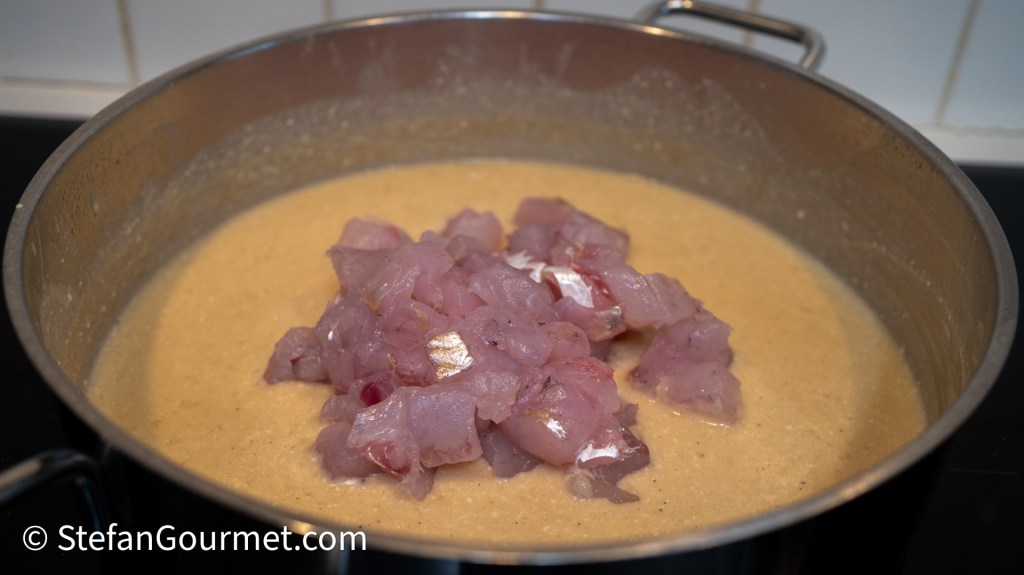
Add the fish to the sauce.
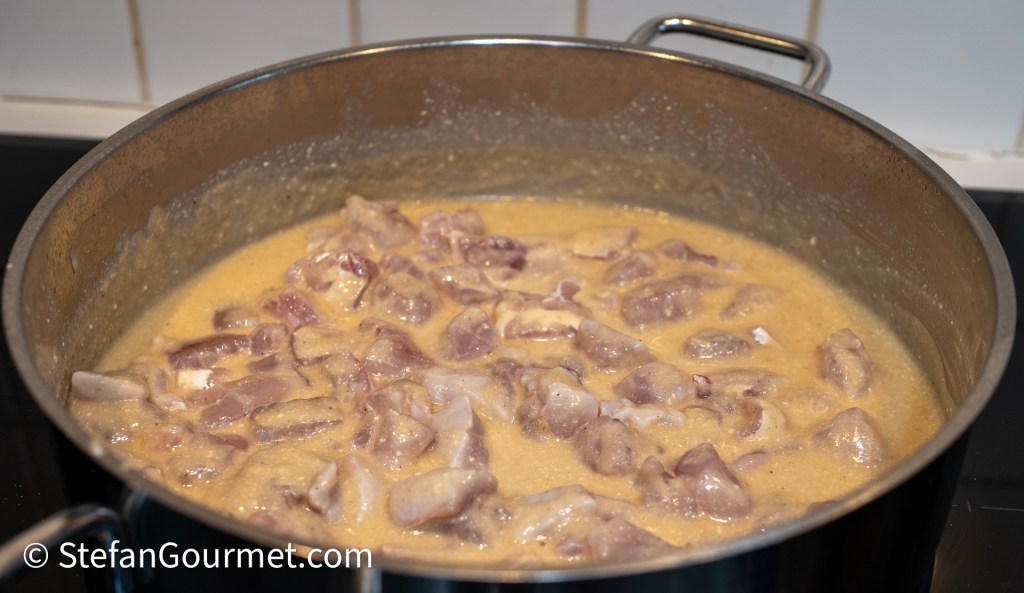
Stir over low heat until the fish is coated with the sauce.
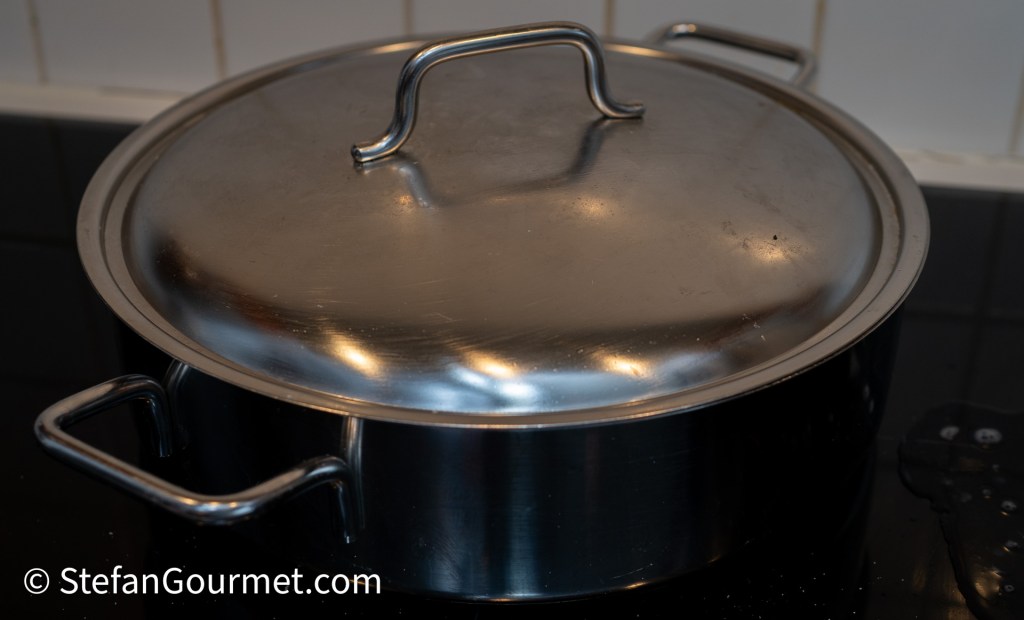
To finish the dish, bring a large pot of water to a boil. Do not add the tagliatelle before adding the fish to the sauce, see below! When the water boils, add salt and the tagliatelle, and cook until al dente. Mine took 6 minutes, as they were quite thick.
Cover and allow the fish to cook in the sauce over very low heat. The sauce should not boil.
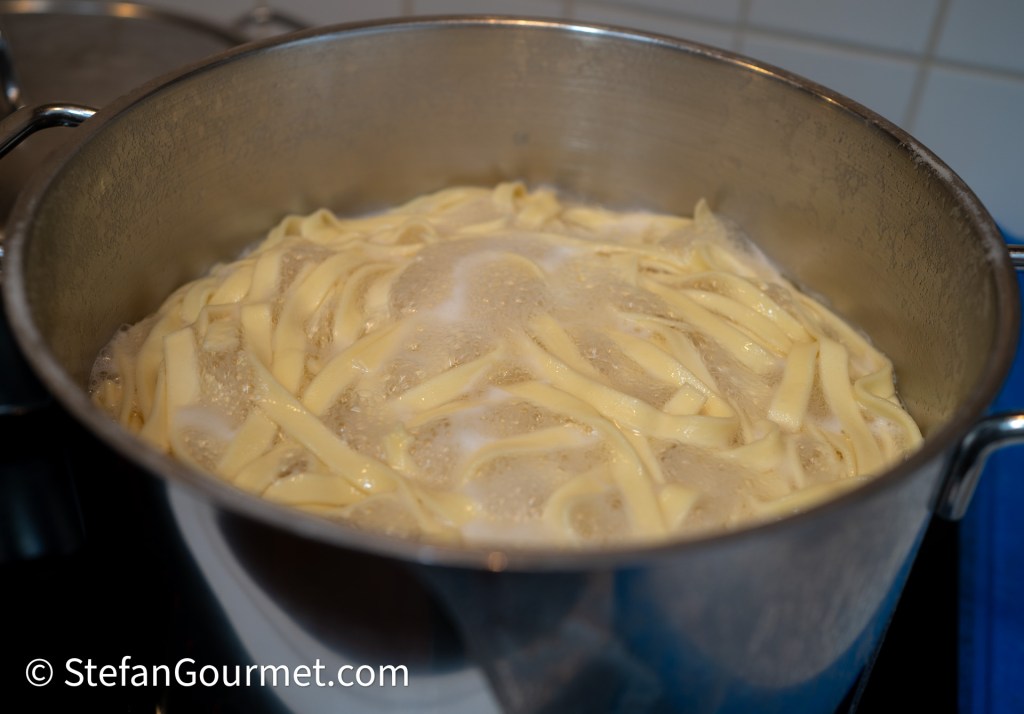
Now add the tagliatelle to the the boiling water.
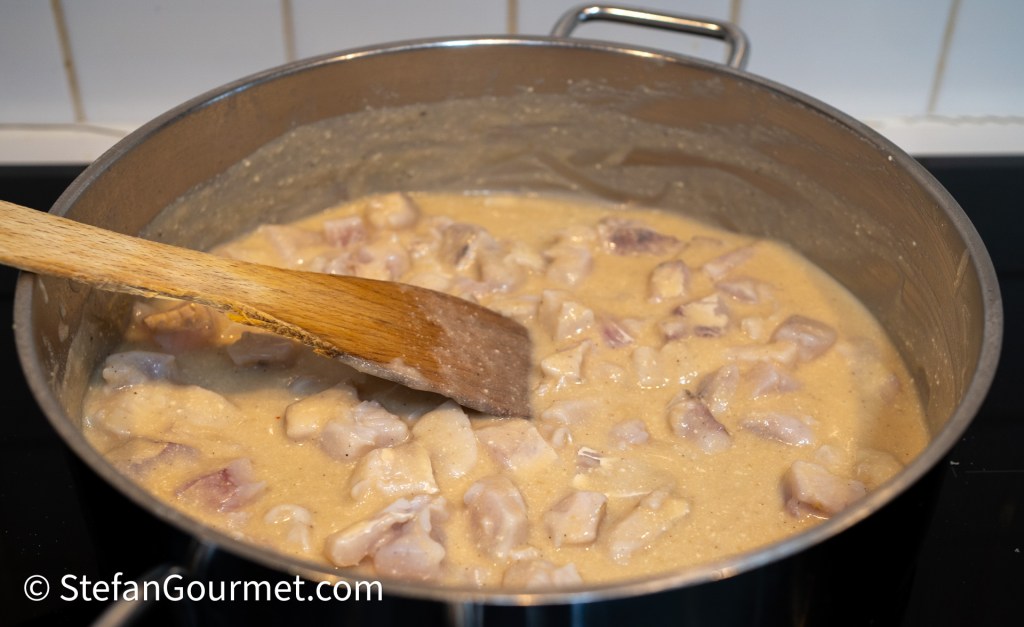
After a couple of minutes, stir the fish.
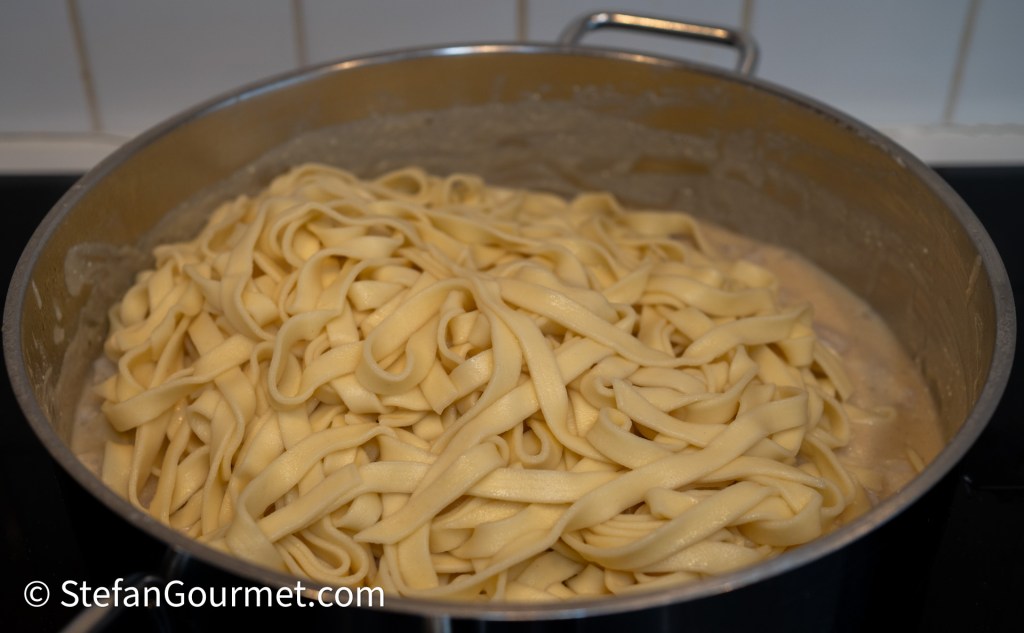
When the pasta is al dente, drain it, and add it to the sauce with the fish, together with most of the minced parsley.

Stir over very low heat until the pasta has been coated with the sauce.

Serve at once on preheated plates, sprinkled with the remaining parsley.
Wine pairing
This is great with a white Burgundy such as Meursault, Chassagne-Montrachet, Puligny-Montrachet, or Saint-Aubin. But it is also great with other oaked white. It was wonderful with an oaked Gavi from Italy.


What a beautiful dish Stefan; using the bits of fish carcass to make the stock is a must, and it always pays off in flavor.
I adore fresh water fish. We have pike and we have perch here, I’m not sure if they are the same as your pikeperch, but they are probably related. Sweet and tender, even though some species can get really large.
LikeLiked by 2 people
Sweet and tender sounds like this one. The pike and perch we have here have too many bones and are therefore not popular as fish to eat. Pikeperch doesn’t have that problem.
LikeLiked by 1 person
Our small perch are like that too, lots of bones! But the larger walleye perch are plump and meaty.
LikeLiked by 1 person
According to Wikipedia, walleye perch is known as American pikeperch, so that makes sense.
LikeLiked by 2 people
Oh! Good to know. It’s one of my favorites! Thanks Stefan!
LikeLiked by 1 person
This would make for a beautiful Sunday Supper with family. Thanks for the inspiration.
LikeLiked by 2 people
This is one of my favourite fish. Thank you for the recipe
LikeLiked by 2 people